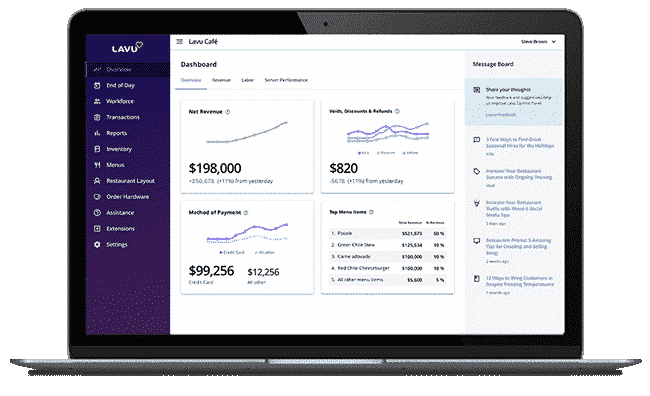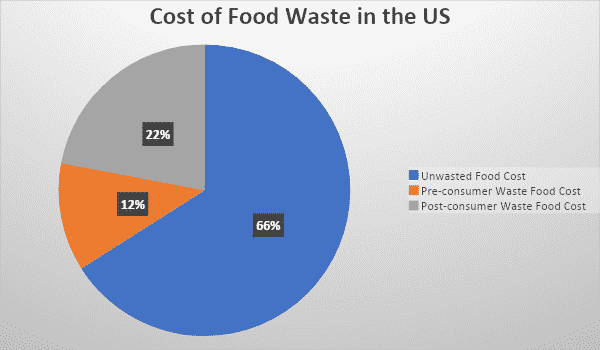
Keeping accurate forecasts of your restaurant sales allows you to determine how well your business is performing. You get to know when to order your next month inventory, open more restaurant locations, or recruit more employees for optimal performance. To give you a better understanding of restaurant sales forecasting, this free resource looks at how to estimate restaurant sales and the importance of the process.
Conducting Sales Forecasts for Your Restaurant
Just like other business types, there is no single way of conducting accurate restaurant sales reports. The method chosen will usually depend on the available information, access to historical data, and any other factors that drive the business. While one restaurant will forecast sales based on the number of customers at any time, another will rely on POS data to make accurate estimates.
A good restaurant sales forecast looks at shorter time like hours, as opposed to weeks. This is because sales in the restaurant industry are affected by real-time conditions, including peak periods and weather. The best way to achieve accurate projections is to use restaurant performance metrics. The following performance metrics can help you make accurate projections of your restaurant sales.
- Restaurant’s Daily Capacity
Your restaurant’s daily capacity indicates the amount of sales you can make on a normal day. If your restaurant full capacity is 20 tables of four on a busy evening, it would mean that you will be selling 80 (20 tables x 4 diners) main courses for every party. If you have an average set of two parties in a night, it means that your sales double to 160 main courses. If the average per-person ticket is $30, the sales can be forecasted as follows:
Table Count x Number of Seats per Table x Ticket Price x No. of Parties

Sales Forecast = 20 Tables x 4 seats per table x $30 per Guest x 2 Parties per Night
Sales Forecast = $4,800

This means that your projected sales for a busy evening is $4,800. You can also use the formula to forecast restaurant sales for a typical day and quieter evening. To get more accurate estimates, calculate when your restaurant is half-full or quarter-full depending on your stream of customers. This gives you a clear idea of your estimated restaurant highs and lows. You can then establish the restaurant’s weekly baseline to get your best-case and worst-case scenarios on a monthly, weekly, and daily basis.
- POS Sales Data
A more accurate way of estimating your restaurant future sales is using sales data from your POS system. Instead of having to calculate sales based on physical count, a restaurant POS system provides pre-calculate metrics for conducting sales forecasts. Since the POS captures a wide range of data, restaurant management can produce reports like revenue-per-server, sales-per-period, and more.

The restaurant analytics provided by the POS system allow restaurant owners and managers to review their sales reports in details. This data makes forecasting of sales easier and allows you to compare sales between periods. You can determine how much sales you make during peak hours and the menu items that sell the most.
Importance of Restaurant Sales Forecasting
Conducting accurate restaurant sales forecasts is a crucial step in making good decisions for your business. It helps you make better data-driven decision on restaurant expansion, creating an expansion business plan, hiring of staff, and inventory management. By making accurate estimates of what you expect to sell, you ensure that you are better equipped for the short- and long-term running of your business. The importance of this process lies in the following key areas:
- Profit Estimation
The whole point of running a restaurant business is making profits. Sales volume projections help you in setting price points for better prices and planning for business growth. It also helps in making better decisions for your business. For instance, when should you hire a new assistant manager, renovate the restaurant, or purchase more equipment?
Sales forecasts help you to identify periods of high profitability and low seasons. This will help you in making better plans for busing growth. You will know the right time to refurbish your restaurant or launch a new one. You will also be able to estimate how much sales you will make with such plans.
- Inventory Projections
Restaurant sales projections are based on historical data. This means you can predict the sales that will occur over a similar period under consideration with a degree of accuracy. If you expect sales to increase, you can add the amount of inventory to purchase during the period. By making accurate predictions, you reduce instances of food waste or purchasing insufficient inventory. With food waste costing restaurant huge amounts every year, accurate forecasts help you to avoid over and under buying of restaurant. You will always know how many customers to expect, and plan your inventory accordingly.

- Effective Restaurant Staffing
Accurate sales estimates make employee scheduling accurate as well. With labor costs being the biggest expenses of a restaurant, there’s a need for restaurant management to keep the cost at minimal. Part of making smart staffing decisions is scheduling your restaurant staff based on the amount of sales expected that specific period.
Staffing decision are important because having too many staff in a quiet restaurant results in a high labor cost ration. On the other hand, too few staff on a busy evening results in bad customer service. Accurate sales forecasts are effective in controlling under and over staffing, by having the optimal number of staff working at your restaurant. You will not have to deal with servers standing idle at certain times of the hour or being stretched too thin.
Concluding Remarks
Although sales forecasts are just estimates, they help you plan for what the future holds. The more accurate your projections are, the better your plans will be. Always refine your sales estimates as you get more data and change your plans accordingly.

